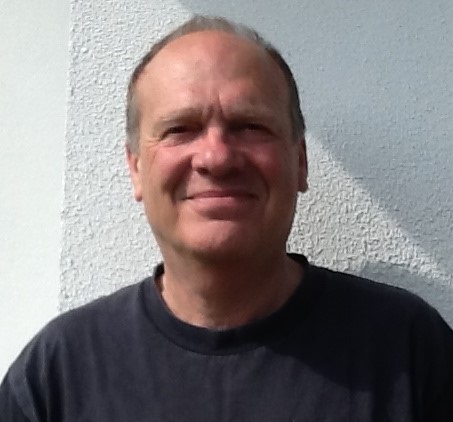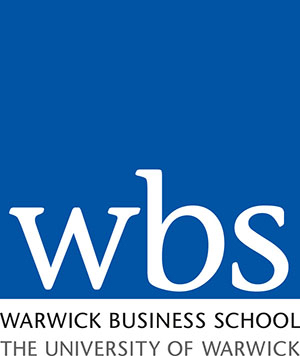- Innovation
Stimulating Radical Entrepreneurship and Innovation
Warwick Business School’s James Hayton helps corporate entrepreneurs find new markets, technologies, and business models

According to a McKinsey report late last year businesses were already prioritizing innovation and the search for new value creation opportunities. “We've seen a growth in investment in corporate venture capital,” says Professor Hayton, “where a corporate invests in a start-up to learn and access new technologies. Instead of pulling back, there's been a growth in that investment.”
Incremental innovation to improve efficiency may be sufficient in a stable business environment—but stable business environments seem a distant memory. Today more radical innovation is required, and it is hard. “The hard thing is the more radical innovation, or the semi-radical innovation, that explores new markets, new technologies, new business models,” observes Hayton who leads Warwick’s new open program, Innovation & Corporate Entrepreneurship.
The hard thing is the more radical innovation that explores new markets, new technologies, new business models
For Hayton it is these radical innovations that will provide the real sources of long-term growth. ”Your existing business is eventually going to decline,” he explains, “and you're going to have to find new ways to compete.”
To find these new ways to compete, organizations urgently need to shift their focus away from maintaining continuity, and implementing efficiencies, and towards supporting innovation-led growth. “The challenge is that all of this costs money,” cautions Hayton. “The companies that have resources will have an advantage because they can take risks. If you are struggling for survival, it's going to be very challenging to be an innovative business.”
…………………………………………………………………………………………………………………
Dates: 14, 21, 28 September 2021 │ Format: 100% Online
…………………………………………………………………………………………………………………
Innovation is often seen as the province of start-ups. However, incumbent companies do have some significant advantages—resources, capabilities, and experience. The key is to be able to leverage these advantages to drive innovation. Hayton quotes the example of Uber—when ride hailing collapsed a year ago for obvious reasons it quickly reconfigured its existing technologies and capabilities to offer Uber Eats.
This is about ‘market opportunity identification’, one of the core processes covered on the Warwick program. “It means identifying things that can exploit your existing skills, capabilities and technologies—the resources available to you,” he says. “It's a systematic, transparent approach, where you can lay out your assumptions about the possibilities of an opportunity and its potential for creating value.” With this you can assess the level of risk involved, and your appetite for that—"You might be short of cash and need a quick win. Or you might be superbly confident in your engineering prowess and say, we can take a moon-shot which nobody else will be able to do.”
It means identifying things that can exploit your existing skills, capabilities and technologies
Having identified potential opportunities companies need to set up processes for testing ideas. “That's the second aspect,” says Hayton, “For this we rely on a process called ‘Lean Start-up’ as a way to inexpensively experiment and learn whether your ideas are getting traction, and then iterating and developing them.”
One major issue is that CFOs and other corporate leaders are typically risk averse. Which begs the question, who is going to drive entrepreneurship and innovation in the organization? “Ultimately it has to come from the top leadership,” asserts Hayton. “30 years of research has consistently shown that the biggest factor for success is top management support. Prioritizing by saying: ‘We're going to postpone some current profits for future opportunities. There's going to be risk. We might have some failures and that's OK’. It relies on some extended visionary leadership and commanding the space to say, this is a priority for the long run.”
Hayton mentions the Jeff Bezos mantra, ‘It's always day one at Amazon’, to describe the attitude needed by top management. “While that comes from leadership first and foremost,” he adds, “It's really important to emphasize that this is a team sport. You can be the best leader in the world and have the best vision but unless you have the right support in place—your employee base and your middle managers—then it won't happen.”
It's really important to emphasize that this is a team sport
Organizations need a network of inventive people who have ideas and are motivated to share them, and middle managers able to identify ideas with great potential and to sell them and protect them. “In a large organization, it is this network of roles that you have to think about and then the culture and the rewards and the incentives and the management practises.”
An organizational culture that welcomes and encourages innovation is primarily a culture that gives people autonomy. This presents an interesting balancing act as Hayton observes, “You need to give people autonomy. They have to be able to think for themselves and have space and time to work on their ideas—while the organization is trying to meet targets, perform today, and keep the wheels on the bus.”
One interesting research finding into the cultural dimensions that nudge the choices we make when nobody is looking, is that when there is no supervisor directing behaviour, people think: what should we do? What is appropriate in this community? “That's why culture matters,” suggests Hayton. “You can look at particular dimensions of culture and see that they're associated with being more or less entrepreneurial. We also know there's no one culture for innovation. Amazon has a very different culture from W. L. Gore and yet they're both very innovative companies.”
To what extent is entrepreneurship a skill to be taught and practiced? “We tend, in large organizations, to create executives who are good at executing strategy. We teach a lot of that in our MBA programs. But executives don't tend to develop the kinds of skills needed for entrepreneurship—for testing new ideas, for building new strategies and new business models.”
Executives don't tend to develop the kinds of skills needed for entrepreneurship
Existing staff can develop these skills, but organizations need to think about how they are supported—who wants to engage in innovation, who will prefer to help scale the new business, and who might be both an entrepreneur as well as an executing executive. “There is a strong argument for using existing employees,” says Hayton. “Because if you build a new business in an established organization, at some point, it has to be rolled into the operating business. An insider is going to be more influential in getting that adoption than an outsider.”
This leads to the question, what role can HR managers play in fostering entrepreneurship and innovation? “Entrepreneurship depends, broadly speaking, on discretionary contributions by employees,” observes Hayton. Creative contributions tend to be intrinsically motivated. The way you support discretionary behaviour, by employees who will go ‘above and beyond’, is through the way you design work—the incentives you have, the performance management systems.” In short, HR executives have an important role to play.
About the program
Warwick Business School’s Innovation & Corporate Entrepreneurship program opens with a look at the environmental pressures that make innovation and entrepreneurship essential for any organization. “We talk about what it actually means to be entrepreneurial and then what it means to develop an entrepreneurial and innovation strategy. How much risk are we going to take on? How radically do we need to innovate? The more dynamic and fast changing the environment, the more likely you're going to have to look at more radical forms of innovation, you're going to need a portfolio,” says Hayton.
Next is a look at the processes that you need to support that strategy. Then finally, a look at organizational culture and “the ways in which organizations successfully encourage engagement with innovative processes. We look at frameworks to understand these ideas, and we engage with cases to understand them in a real narrative way.”
The program will be 100% online, consisting of live sessions as well as live interactions with peers in simulation exercises and case discussions. It will be delivered on Microsoft Teams over three days, with some self-paced material available on Warwick’s long established distance learning platform. As organizations emerge from the pandemic and set a path for future growth, innovation will be key and the Innovation & Corporate Entrepreneurship program very timely.
Warwick Business School is a leading thought-developer and innovator, in the top one per cent of global business schools.
ARTICLES YOU MIGHT LIKE
VIEWPOINT
Cognitive neuroscientist, Lynda Shaw, explains how to understand and support intrapreneurs
DEVELOPING LEADERS QUARTERLY MAGAZINE AND WEEKLY BRIEFING EMAILS


































